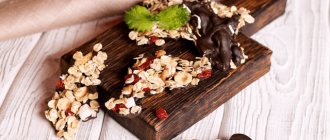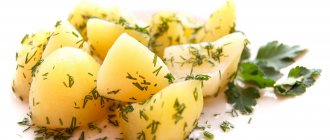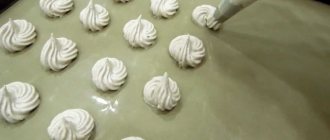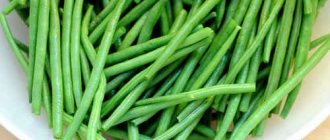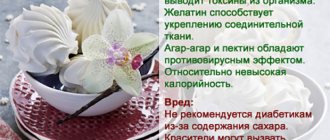Turkish delight is an oriental dessert that is made in several variations. Shaker delight is made from flour, and Turkish delight is made from sugar. Starch, several types of nuts, coconut flakes and other additives are added to both sweets. The most popular was Turkish delight, which, for greater consumer convenience, began to be called simply “Lukum”.
How did the sweetness appear, what is included in its composition and can Turkish delight be classified as a healthy food?
What you need to know about the oriental dessert
Turkish delight is an invention of Turkish confectioners, which for a long time was prepared exclusively within the country. In the 19th century, the sweet was finally able to see the world thanks to chance and one British traveler. A young man traveling around the world was delighted with Turkish delight and wanted to bring the dessert home. The Western world appreciated the oriental sweetness. Today there are dozens of industrial enterprises that produce Turkish delight and sell it in every part of the planet.
Content:
- What you need to know about the oriental dessert
- Brief etymological note
- Historical reference
- Calorie table for different types of Turkish delight
- Useful properties of the product
- Can the product be classified as a healthy food?
- Recipe for traditional and dietary strawberry Turkish delight
Interesting: Pablo Picasso claimed that it was the oriental dessert that helped him concentrate on creativity, and Napoleon and Winston Churchill called pistachio delight “the king of desserts.”
The product is prepared using a special technology from sugar, starch and variable ingredients such as honey, nuts, sweet syrup, dried fruits, coconut flakes. The dish attracts not only its taste, but also its appearance. Turkish delight is served in the form of elastic cubes, which are sprinkled with powdered sugar/coconut flakes/cocoa or almond petals.
The classic and most popular Turkish delight recipe contains rose water. It gives the product a delicate pink tint and a sweet exotic taste. There are hundreds of varieties of dessert, which depend on the filling, shape and toppings.
Interesting: the fourth chapter of the book “The Lion, the Witch and the Wardrobe” by Clyke Staples Lewis (the “Chronicles of Narnia” series) is called “Turkish Delight”.
Varieties of Turkish Delight
There are two main classifications of the product: by shape/size and by type of filler.
Classification of Turkish delight by shape/size:
- cubic or traditional;
- for children (figurines of animals or objects are cut out of an elastic mass to interest the baby and diversify food intake);
- roll;
- threaded;
- whole (most often whole layers are served at large-scale celebrations, so that each guest can independently choose the serving size);
- Arabic (solid layer in the shape of a parallelepiped);
- two-layer (consists of several layers and combinations of flavors).
Classification of Turkish delight by type of filler:
- fruit (the most healthy version of dessert, which contains fruit juice or pulp instead of sugar. The taste of the finished dish is rich and the texture is denser);
- nut (most often used are hazelnuts, peanuts and pistachios);
- pink (with rose petals and rose water);
- white (contains only sugar, starch and filtered water);
- honey;
- fig;
- “Vizir” (it is prepared according to a special principle so that when cut, there is a round trace of filling or nut in the center of the Turkish delight. Outwardly, such Turkish delight resembles an eye).
Benefits and harms
Oriental sweets are useful for people leading an active lifestyle. They are rich in carbohydrates, which quickly restore muscle tone and improve tissue regeneration. Turkish delight should be consumed after training or other physical activity.
- Exhaustive exercise (running, strength training, stretching, swimming, cardio) burns a large amount of muscle glycogen. This is the same fuel that our body uses to synthesize ATP and contract muscles. Fatigue after exercise signals that there is almost no glucose left in our body. Turkish delight and other sweets help to perk up and restore muscle glycogen reserves.
- Sugar triggers the production of insulin, which athletes need to gain muscle mass. The hormone increases the permeability of muscle cells and facilitates their nutrition. Thanks to insulin, glucose, amino acids and other hormones enter the cells.
- Starch is a breeding ground for beneficial bacteria. Once in the gastrointestinal tract, it settles in the large intestine, where its synthesis begins. Bacteria break down the product into butyric and other fatty acids. They relieve inflammation and prevent the development of colon cancer.
- Turkish delight quickly satisfies hunger. Dieters can eat a couple of pieces of dessert 15-20 minutes before starting their meal. Sugar and amylopectin promote a feeling of fullness and help reduce the amount of portions consumed by half.
In ancient times, Turkish delight was the favorite sweet of scholars and viziers. Thanks to the large amount of glucose, it stimulated mental activity and strengthened memory. This is how the sages of the East maintained clarity of mind and vividness of thought throughout their lives.
Eating large amounts of Turkish delight with a sedentary lifestyle leads to the formation of fat deposits. Once in the body, unspent carbohydrates provoke insulin surges, and sugar becomes a breeding ground for pathogenic microflora. Undigested starch inhibits intestinal motility and gastrointestinal function. As a result, the skin of the face acquires an earthy tint and becomes covered with rashes.
Sweets with added starch are not recommended for people suffering from obesity, gastrointestinal diseases, and type 1 and type 2 diabetes.
People who have had a stroke, CABG or abdominal surgery should consume Turkish delight with great caution.
Elevated cholesterol levels, liver disease and thrombosis are a reason to refuse oriental delicacies and foods rich in carbohydrates.
Historical reference
The age of Turkish delight has long exceeded 500 years. It was originally prepared from plain water, sugar, starch and rose petal essence.
There are several popular versions of creating Turkish delight. One of them describes the rivalry between Turkish court chefs. Each of them strived to surprise the Sultan with new dishes every day and become the main one in the palace kitchen. Among the quarrels, intrigues, and eternal search for the perfect recipe, Turkish delight appeared.
Another legend tells of a voluptuous sultan who received the favor of his chosen ones through desserts. As a “weapon” against female inaccessibility, he used several popular original recipes that invariably worked. One day he wanted to surprise his mistresses. He ordered the court chef to prepare something completely new, which neither he nor his women had ever tried. Thanks to the ingenuity and gastronomic talent of the cook, Turkish delight appeared.
The third popular theory points to a famous Turkish pastry chef who, with great effort and love, opened his own pastry shop and then became a court chef. The confectionery shop was located in Istanbul. Every day and every night, hundreds of people crowded around him who wanted to try the unique sweets. The Sultan was also interested in this excitement. They brought him several sweets to try, after which the people's confectioner received money, fame and a place in the palace kitchen.
This story looks most plausible, because the Turkish court pastry chef Ali Muhiddin Haji Bekir really worked in Istanbul at the end of the 18th century. Some consider him the creator of the dessert, others - the man who improved the original recipe and created new varieties of Turkish delight.
In 1897, the grandson of pastry chef Haji Bekir introduced Turkish delight to the European public. The acquaintance took place at the Brussels exhibition. Europeans loved the oriental sweet so much that Turkish delight received a gold medal at the exhibition. And the grandson of the mysterious confectioner concluded several lucrative contracts for the supply of sweets to Europe. Today, the dessert is produced on an industrial scale in more than 50 countries around the world, but East Asia retains its primacy.
Contraindications
Due to the high calorie content of Turkish delight and high sugar content, the sweetness in the body turns into fat and is deposited under the membranes of internal organs and skin. Therefore, excessive consumption of sweets leads to hypertension, diabetes and obesity.
Among other things, the oriental delicacy disrupts the secretion of enzymes in the stomach, pancreas and intestines, and also damages tooth enamel. Therefore, if you have chronic diseases and a sedentary lifestyle, it is better not to consume Turkish delight at all.
Calorie table for different types of Turkish delight
| Variety of dessert | Calorie content (in kcal per 100 grams of product) | Calorie content (in kcal per 17 grams – 1 serving) |
| Traditional | 354 | 60 |
| Turkish | 405 | 69 |
| Pink | 331 | 57 |
| Fruit | 410 | 70 |
| Chocolate | 348 | 60 |
| Peanut | 397 | 68 |
| Hazelnut | 386 | 66 |
| With walnuts | 374 | 63 |
| Hazer Baba | 388 | 66 |
| Average nutritional value of dessert (in grams per 100 grams) | Average % Daily Nutrient Value | |
| Squirrels | 1,6 | 1,5 |
| Fats | 1,7 | 2 |
| Carbohydrates | 88,5 | 30 |
Useful properties of the product
The benefits are determined by the composition, method of industrial processing and the amount of product consumed. Nut, coconut and pink delight will differ radically not only in taste and calorie content, but also in the set of useful nutrients. To determine the quality and possible effect of the product, study the composition.
For example, pistachio Turkish delight is a natural aphrodisiac. It contains specific enzymes that have a beneficial effect on libido and sexual function. Pistachio kernels are a real storehouse of vitamin B6, copper and manganese. These elements are quite difficult to obtain from plant foods, which increases the value of pistachio delight. Due to phenolic compounds, sweetness will help maintain youth and health of the body, and with the help of lutein and zeaxanthin, strengthen the bone skeleton and the functionality of the visual organs. The composition of pistachios is rich in fiber, which will help neutralize the harm of sugar and preservatives.
Benefits and attractions of the dish
In the East, it is customary to call Turkish Delight in one word – pleasure, which translated into Turkish sounds like “Lukum”. The dish is also considered an incredibly tasty sweet, which is one of the national dishes of the East. You can’t visit Turkey without trying this famous delicacy. Even during the times of the Sultanate, Turkish delight was considered a healthy and appetizing delicacy that should always decorate the table of the nobility. Usually this sweetness is cut into cubes and sprinkled with fine powder on top.
The variety of delicacies has increased significantly until today. But still, more advantage is given to the standard taste and form of the product. Despite the calorie content, everyone can afford to eat a few pieces of yummy food.
Can the product be classified as a healthy food?
This depends on the composition of each specific Turkish delight. Industrial sweets most often contain cheap, low-quality starch and white refined sugar. They contain virtually no beneficial nutrients. These are empty calories that provoke sugar spikes, an increase in body fat and malfunctions of all body systems. Excessive consumption of processed foods can lead to:
- obesity;
- diabetes mellitus;
- increase in visceral fat volumes;
- internal inflammatory processes;
- malfunctions of organs and a decrease in their productivity;
- early aging of the body;
- acne, allergic rashes.
Can this be avoided? Yes. Keep track of the composition of the food that goes into your grocery basket, and then into the esophagus. Choose the most organic products with a “pure” composition and natural ingredients. But if the taste of healthy Turkish delight does not please you as much as industrial Turkish delight with an abundance of sugar, then do not deny yourself the pleasure. Our body can easily tolerate 15-20% of junk food in our diet, provided that the remaining 80% consists of quality meat, vegetables, fruits, fish, whole grains and water. The main thing is not to overdo it and eat no more than 20% of the harmful substances. Then sugar/preservatives will not affect your health or your waistline (provided you are completely healthy and on weight maintenance).
Another way to get the most benefit and pleasure from Turkish delight is to make it yourself. You can vary not only the taste, but also the quality of the ingredients. Refined sugar can be easily replaced with coconut sugar, add more freshly squeezed juice, nuts, fresh fruits and berries, creating a real vitamin bomb for the body.
Can you eat it while losing weight?
The dietary benefits of Turkish delight lie mainly in the fact that the dish is traditionally prepared from natural ingredients.
Turkish delight can be an excellent substitute for chocolate and flour products for those who find it difficult to give up sweets completely during a period of weight loss.
Despite the obvious benefits, any product high in sugar can cause obesity and make it difficult to lose extra pounds.
Therefore, it is permissible to use only in small quantities. It is recommended to choose those types of dessert that are prepared without chocolate, but with low-calorie fruits and berries.
Be sure to read: Dietary pancakes for breakfast, lunch and dinner: the best recipes, kefir pancakes, meat, vegetable and sweet
The benefits of the product are determined in each specific case; you should consult a nutritionist. Only a specialist can answer the question accurately, taking into account the individual characteristics of the body and diet.
Recipe for traditional and dietary strawberry Turkish delight
Traditional
We will need:
- corn starch - 5 tablespoons;
- fresh orange juice – 130 milliliters;
- sugar (it is best to use coconut or brown) – 500 grams;
- filtered water – 250 milliliters;
- rose water – 1 teaspoon;
- pistachios (can be replaced with your favorite nut) – 500 grams;
- powdered sugar/cinnamon/coconut flakes for decoration.
Preparation
In a small container, combine cornstarch and 125 milliliters of cold filtered water. In a clean saucepan, combine sugar, remaining cold water and orange juice. Place the pan over low heat and bring to a boil. As soon as the contents of the pan boil, add diluted cornstarch and cook for 15 minutes, stirring constantly.
Remove the container from the stove, add rose water, pre-chopped pistachios and mix the contents thoroughly. You will get a thick mass that cannot hold its shape on its own. Pour it into a high-sided baking tray and leave overnight at room temperature.
By morning the sugar-nut mass will harden. Cut it into small squares, roll each in coconut flakes/powder/cinnamon or other ingredients. It is best to store prepared Turkish delight in tightly closed paper bags.
Dietary (strawberry)
We will need:
- strawberries – 200 grams;
- powdered sugar – 150 grams;
- instant gelatin – 15 grams;
- half a lemon.
Recipes
This treat is easy to prepare at home. Below are just some of the recipes. In addition to them, there are many more author’s variations.
Turkish delight can be prepared with any combination of fruits, nuts, berries and other products.
Classical
Classic Turkish delight
The classic recipe includes:
- sugar – 300 grams;
- starch – 50 grams;
- citric acid - a pinch;
- water – 1.5 cups;
- powdered sugar - to taste.
Sugar and starch are mixed in water with a wooden spoon, after thickening, citric acid is added, and the finished mixture is poured into a suitable form. The powder is applied immediately after the mixture has completely hardened.
Almond Turkish Delight
The recipe with almonds includes other proportions:
- sugar, starch - 3 cups each;
- water – 1.5 cups;
- almonds – 0.5 cups.
The starch is diluted with water, mixed until a mass without lumps appears, and poured into a syrup of water and sugar. The mass is sprinkled with almonds, divided into two slices or smaller.
After hardening in the mold, the finished delicacy is rolled with sugar or coconut powder.
Apple Turkish Delight
Apple Turkish Delight
Apple recipe contains:
- apple – 4 pcs.;
- sugar – 50 grams;
- starch – 120 grams;
- walnuts – 50 grams;
- water – 1 l;
- powder or coconut
Apples must be peeled, seeds removed, cut into small slices, and boiled in syrup with the addition of nut crumbs. After this, the mixture is covered with starch and water.
The process should take place over low heat. Then everything happens as usual: hardening and sprinkling. The use of cane sugar guarantees a pleasant taste.
Citrus Turkish Delight
For preparation you will need:
- water – 0.5 liters;
- sugar – 1 glass;
- starch - 0.5 cups;
- zest of lemon, orange or any other citrus - to taste;
- citrus oil, if you need to enhance the aroma;
- powder - to taste.
Be sure to read: How many calories are in candied pineapples and other fruits per 100 grams? Is it possible to lose weight?
The starch, diluted until a homogeneous mass appears, is poured into sugar syrup, after which it is simmered over low heat, and the zest is added.
For the correct consistency, it is necessary to constantly stir the composition. If aroma oil is used in the preparation: it is added last, before pouring the mass into the mold.
Stuffed
Recipe includes:
- sugar, water - 4 cups each;
- starch - 3 tbsp. l.;
- cinnamon – 0.5 tsp;
- almonds or other nuts - 1 cup.
Nuts should be strung on threads. After preparing the syrup, you should carefully and consistently lower the resulting structure into the mass until the desired layer is reached.
The next step is to remove the threads after the workpiece has completely hardened. It is important to leave the mass hot until the whole process is completed, which a water bath will help with.
Peach-nut
Peach-nut lokum
To prepare you will need:
- sugar – 300 grams;
- starch - 1 cup;
- peach puree - to taste;
- lemon juice – 1 tbsp. l.;
- nuts to taste (almonds, peanuts, pistachios);
- powdered sugar - 0.5 cups;
- water – 2.5 cups.
Cook sugar syrup with the addition of lemon juice. After this, peach puree is poured into the syrup, chopped or whole nuts are added. The puree should be thoroughly strained and cleaned. After hardening, the finished form is sprinkled with powder.
